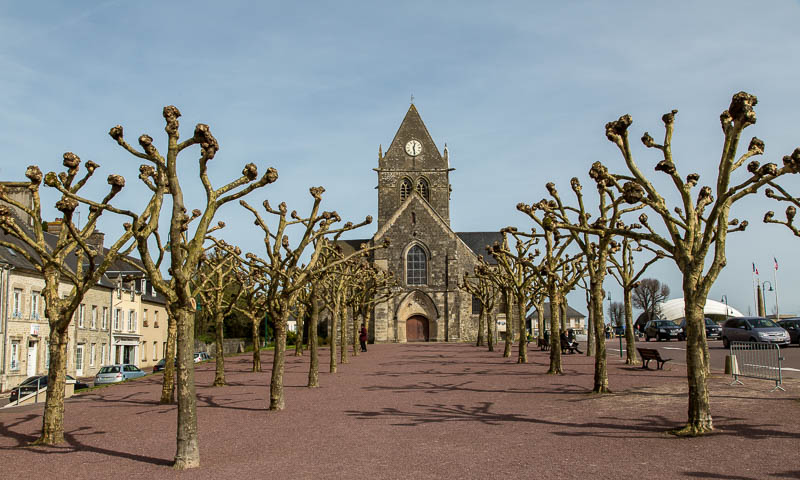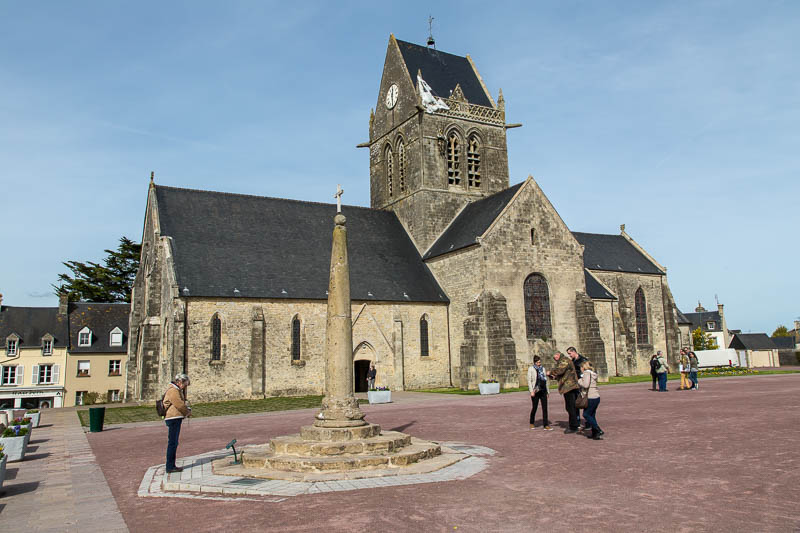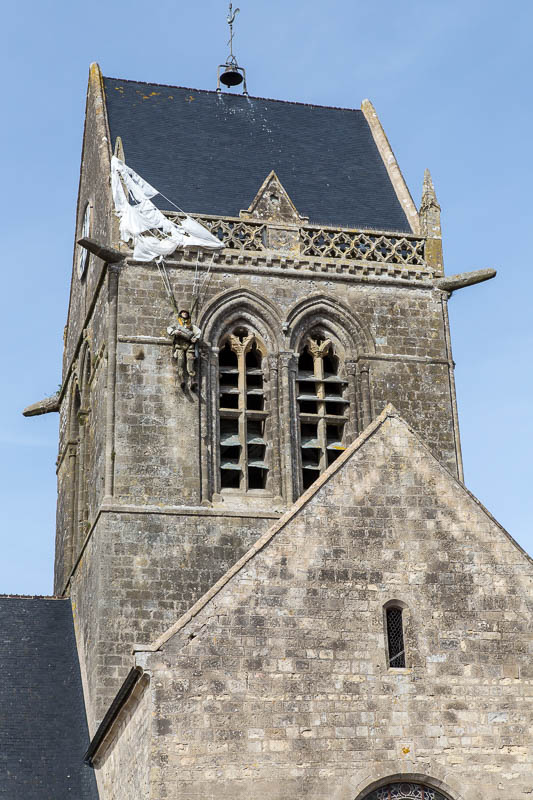 |
| Home France |
|
March 2017 Sainte-Mere-Eglise played a significant part in the World War II Normandy landings. In the early morning of 6 June 1944 mixed units of the U.S. 82nd Airborne and U.S. 101st Airborne Divisions occupied the town in Mission Boston, making it one of the first towns liberated in the invasion. |
||||||||
 |
||||||||
|
The Town Hall which lies on the old main road through the town. |
||||||||
 |
||||||||
|
Outside the Town Hall is this marker stone at the start of the Liberty Road (La Voie de la Liberte). |
||||||||
 |
||||||||
|
Pollarded trees on the approach to the church. |
||||||||
 |
||||||||
|
Outside the church is this Roman Milestone. This must have been an important junction on the old Roman Roads. |
||||||||
 |
||||||||
|
In this view you can see the model of a parachutist hanging from the church which commemorates John Steele of the 505th Parachute Infantry Regiment who landed on the church in the early hours of D Day, 6th June 1944. |
||||||||
 |
||||||||
|
Inside the church this is one of the stained glass windows that honors the paratroopers who liberated the town during the D Day invasions of 1944. This window shows Archangel Michael, the Patron Saint of paratroopers. |
||||||||
 |
||||||||
|
The old communal wash house. On the left of the picture you can see the statue marking the Saint Meen Fountain. Saint Meen, who was born in England in the 6th century, came to the region to visit Saint Marcouf. As he was thirsty he struck the ground with his stick and a spring gushed out. It has never dried up since.
|
||||||||